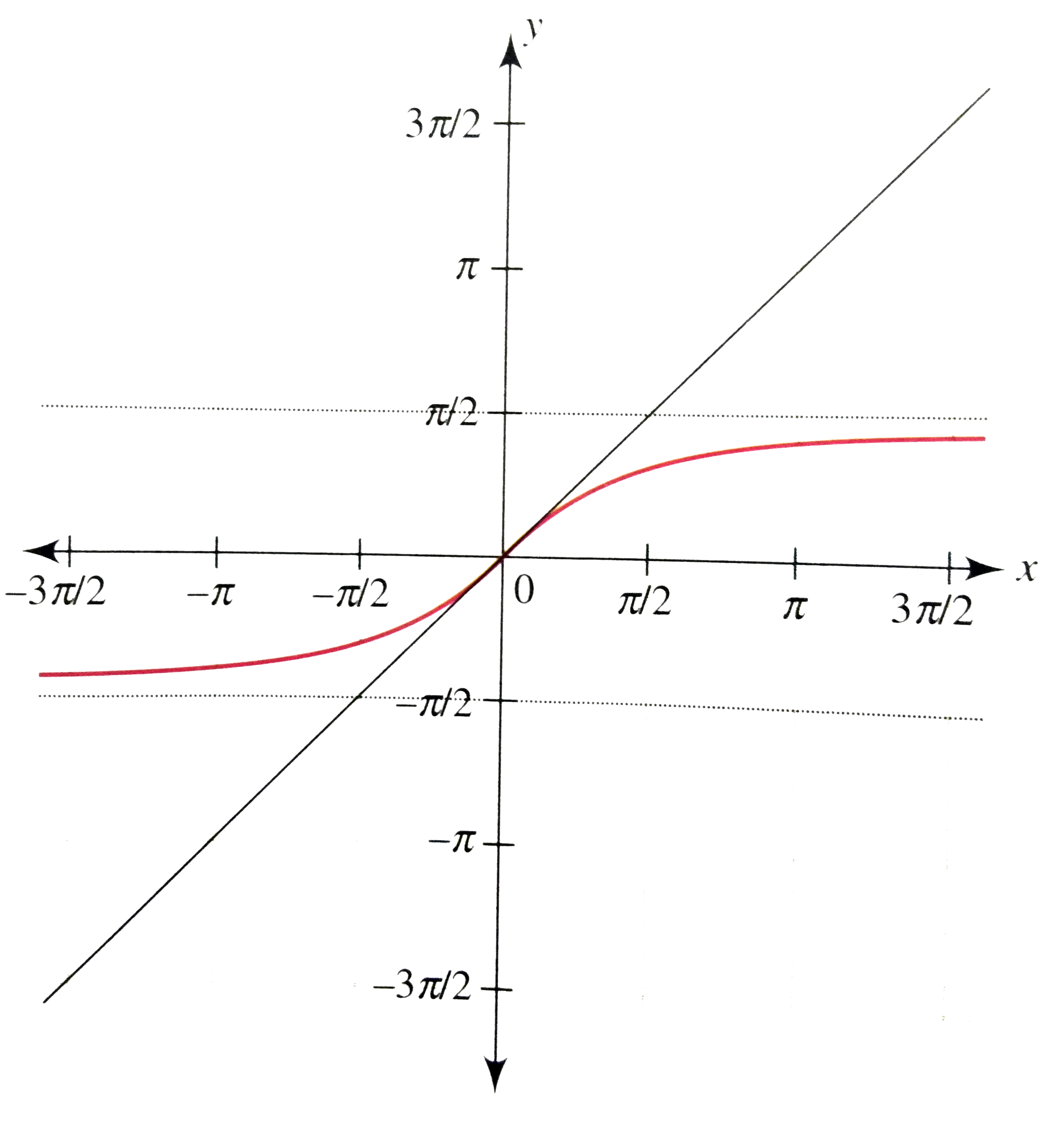Evlute [limtx→0tan−1xx], where [⋅] re[resemts the greatest integer function.
See the graphs of y=x and tan−1x in the following figure.

For f(x)=tan−1(x)=11+x2
∴ f'(0)=1
So the curve touches the line y = x at x = 0
For x>0,f'(x)<1
So the graph of y=tan−1x lies below the graph of y = x.
From the graph, when x→o+, the graph of y = x is above the graph of y=tan−1x
or tan−1x<x⇒tan−1xx<1⇒[limx→0+tanxx]=0
Thus [limx→0+tanxx]=0
Topper's Solved these Questions
- GRAPH OF INVERSE TRIGONOMETRIC FUNCTIONSBook:CENGAGE ENGLISHChapter:GRAPH OF INVERSE TRIGONOMETRIC FUNCTIONSExercise:Exercises
Explore 18 Videos
- GETTING STARTED WITH GRAPHSBook:CENGAGE ENGLISHChapter:GETTING STARTED WITH GRAPHSExercise:Exercises 1.18
Explore 1 Video
- GRAPHICAL TRANSFORMATIONSBook:CENGAGE ENGLISHChapter:GRAPHICAL TRANSFORMATIONSExercise:ILLUSTRATION
Explore 78 Videos
Similar Questions
Evaluate : [limx→0tanxx], where [⋅] represents the greatest integer function.
View SolutionProve that [limx→0tan−1xx]=0, where [.] represents the greatest integer function.
View SolutionEvaluate : [limx→0sinxx], where [⋅] represents the greatest integer function.
View SolutionEvaluate: [(lim)x→0tan−1xx], where [.]represent the greatest integer function
View Solutionlimx→0[(1−ex)sinx|x|] is (where [.] represents the greatest integer function )
View Solutionlimx→0[sin−1xtan−1x]= (where [.] denotes the greatest integer function)
View SolutionDraw the graph of f(x)=[tan−1x], where [⋅] represents the greatest integer function.
View SolutionGiven limx→0f(x)x2=2, where [.] denotes the greatest integer function, then
View SolutionFind x satisfying [tan−1x]+[cos−1x]=2, where [] represents the greatest integer function.
View SolutionFind x satisfying [tan−1x]+[cot−1x]=2, where [.] represents the greatest integer function.
View Solution